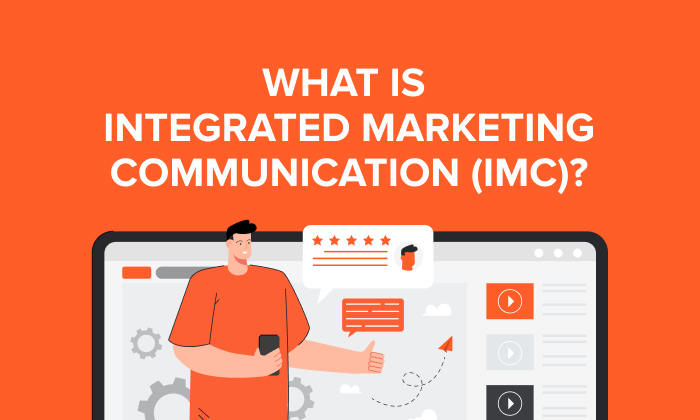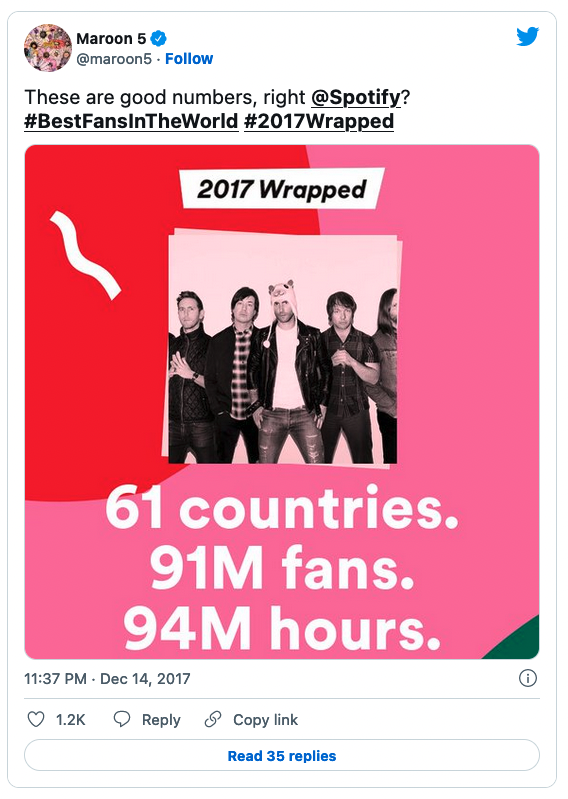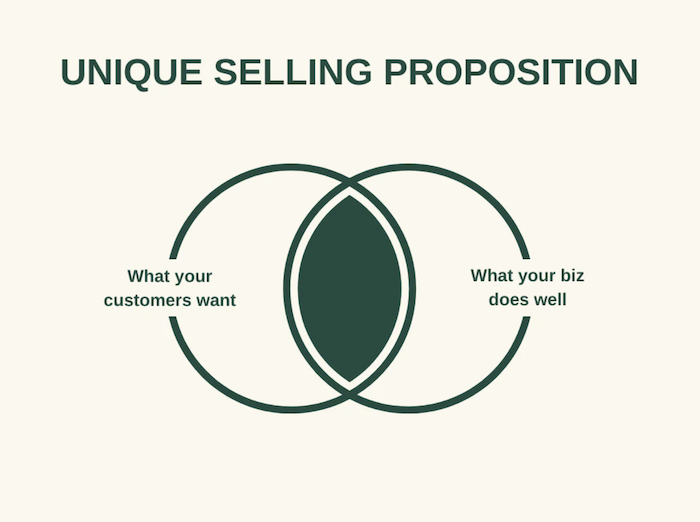
Do you ever recognize a brand’s advertisement without having to look for its logo? Could you mimic a brand’s tone of voice even if you aren’t a copywriter?
That’s the power of integrated marketing communications (or IMC for short)
The idea behind IMC is that customers should have a cohesive and seamless experience whether they interact with your brand on your website, social media channels, or in person.
From brand voice to visual identity, everything should be aligned with your company’s mission, values, and goals.
This marketing strategy is more important than ever. Especially when you consider the fact that consumers interact with brands on a combination of around 20 different channels before making a purchase. You need to deliver a seamless experience across them all.
If you want to improve your brand’s integrated marketing communication, this is the blog post for you. I’ll explain exactly what integrated marketing communications is, why it’s important, and how you can create your own IMC campaign. I’ll even throw in some examples of IMC campaigns from leading brands. Ready? Then let’s dive in.
What Are Integrated Marketing Communications?
First, let’s define what integrated marketing communications means.
The term was introduced in the 1980s, and refers to the process of aligning and unifying each of your marketing channels to deliver a consistent experience.
IMC applies to every channel. From online marketing channels like social media and your website, to offline channels like TV and print. Ultimately, it doesn’t matter how consumers interact with your brand; they get the same experience.
Sidenote: You might be thinking that IMC sounds a lot like multi-channel marketing, and you’d be right. It’s similar, but it’s not the same. Multi-channel marketing simply refers to running campaigns on more than one channel. Integrated marketing communication is about delivering the same experience across all those different channels.
Let’s look at this in practice. Take Apple, for example.
You know an Apple advert when you see it, right? The tone, imagery, and messaging are exactly the same whether you see an ad on the subway, on TV, or are browsing the company’s website. Even the in-store experience is the same.
Every marketing message is completely integrated, and you know exactly what you’re going to get.
Compare that to a brand that doesn’t create integrated marketing communications.
Let’s say you see an advert on Facebook for an eCommerce store. The product image catches your eye, and you like the sales message, so you click through to the website. But the website doesn’t look the same. The brand colors are different. The messaging has changed.
You’re confused and you probably leave the website disappointed, right? Such jarring experience like this is conducive to making a purchase.
That’s why you need to create an integrated marketing communications campaign.
What Is the Goal of Integrated Marketing Communications?
The goal of integrated marketing communications is to create a consistent message and brand identity that customers will recognize across all channels.
This requires a coordinated effort that includes all aspects of marketing, from advertising and public relations to sales and customer service.
For example, if a customer sees an ad for your product on TV, hears about it on the radio, and then visits your website, they should have the same experience.
Your message should be consistent across all channels, and each channel should work together to support the others.
Why is this important?
Well, in a world where an overwhelming number of consumers combine offline and online touchpoints before making a purchase and the order rate is 494 percent higher on omnichannel vs. single-channel shopping, you need to make sure your message is getting through, loud and clear.
An integrated marketing communications plan will help you do just that by bringing all of your marketing efforts together into one cohesive strategy.

Why Integrated Marketing Campaigns Work
Integrated marketing communications campaigns work because they provide a consistent message across all channels that are reinforced with each interaction.
This type of marketing allows you to control the conversation about your brand and ensure your target audience is seeing the same message no matter where they encounter your brand—–whether it’s through paid advertising, social media, or even in person.
Plus, integrated marketing communications campaigns are often more cost-effective than single-channel campaigns because you can leverage existing content and assets across multiple channels.
Key benefits of an integrated marketing communications plan:
- Reach a wider audience than single-channel experiences
- Keep your brand top of mind across all channels
- Build audience trust with consistent messaging and campaigns
- Save budget by reusing content and assets
If that’s not enough, then consider the fact that omnichannel shoppers spend more. Research by Symphony RetailAI found omnichannel grocery consumers shop more frequently and spend 20 percent more than consumers who only shop in store.
Further research from the Harvard Business Review found that customers who use omnichannel shopping spend 10 percent more online and 4 percent more in-store than single-channel customers.
Integrated Marketing Communications Examples
Most integrated marketing communications strategies take the form of campaigns. If you’re looking for your next great marketing campaign, then check out these examples for inspiration.
Spotify Wrapped
Any campaign that takes the attention away from Santa in December is worthy of recognition. But Spotify’s Wrapped campaign takes integrated marketing communications to a new level.
The annual event, which was first launched in 2015 under the name “Your Year in Music” and was renamed in 2017, sees Spotify unveil listener data to individual users and the wider public through a fantastic integrated campaign.
There are two major parts to the campaign. The first is an individual montage, which takes users on a journey through their streaming history. The second is funny billboards and ads that grace cities across the world.
But that’s not all. Spotify also rolls out the campaign to social media. Artists and bands get custom graphics, and listeners are encouraged to share their own wrapped statistics.

The campaign’s impact is huge. According to Twitter, the campaign was mentioned in more than 1.2 million posts. The 2020 campaign increased app downloads by 21% in the first week of December alone.
Domino’s “AnyWare” Campaign
Another integrated marketing communications campaign example success story comes from Domino’s Pizza.
In order to increase digital orders, Domino’s created AnyWare, which allows customers to order pizza through various platforms such as a tweet, text, Ford Sync, Smart TVs, and smartwatches.
Each new way to order was introduced with its own press release and driven to the DominosAnyWare.com website.
In 2015, Dominos also launched a national TV ad campaign featuring celebrities arguing that their way of ordering was the best.
To date, the AnyWare campaign has generated 2 billion earned media impressions including spots on The Ellen Show, Jimmy Fallon, and The Today Show. The TV campaigns generated 10.5 percent year-over-year growth for the brand.

The Martian Movie
To promote the theater release of 20th Century Fox and Ridley Scott’s “The Martian” in 2015, a prologue campaign was created to increase awareness and excitement.
The goal of the “The Martian” prologue campaign was to build box office hype around the new film.
An integrated marketing communications strategy was built to be consumed on a variety of channels including, but not limited to: social media, video, celebrity endorsements, and traditional PR and marketing efforts.
The campaigns included a mock episode of Neil deGrasse Tyson’s StarTalk from the year 2035, an Under Armour campaign showing “The Martian”‘s main character, Mark Watney, as a superathlete of the future, and mock-declassified NASA footage showing each character going through psychological testing before heading out into space.
The Martian opened number one at the box offices and had the second-highest fall opening of all time. It was also the number one movie in the U.S. for four weeks.

How to Create an Integrated Marketing Communications Plan
If you want to create an integrated marketing communications plan that highlights the best of your brand, here are a few key steps you need to take.
1. Get to Know Your Audience
Before you start developing your communications plan, you must take the time to get to know your audience.
Take demographic factors like education level, income, age, race, gender, and geographic location into consideration. Don’t forget about psychological and behavioral traits like values, hobbies, and interests.
Creating a customer profile that is specifically tailored to your ideal customer will help you make better decisions about your marketing campaign.
Sometimes, you may have multiple customer profiles for one campaign. In that case, it’s important to segment your audience so that you can tailor your message to each group.
For example, if you’re marketing a new line of environmentally-friendly cleaning products, you might have one customer profile that is interested in saving money and another that is interested in saving the planet.
Tailoring your message to each group will help you create an integrated marketing communications plan that highlights the best of your brand to every audience.
6. Set Your Targets and Goals
The next thing you need to do is to set targets and goals. There are plenty of reasons to launch an integrated marketing communication. These include:
- Launching a new product or service
- Rebranding the company
- Launching a product in a new market
- Promoting a new sales message or initiative
- Improving your brand reputation
Whatever your goals, make sure to make them SMART. That’s specific, measurable, achievable, relevant, and time-based.
When it comes to making your goal measurable, try to attach numbers to your objectives. For example, if one of your goals is to increase brand awareness, you could measure this by tracking the number of mentions your brand receives online.
Or, if you’re looking to improve customer satisfaction, you could survey your customers after they’ve made a purchase.
2. Set a Budget
Let’s face it; you might not be in a position to hire Neil deGrasse Tyson, NASA, and Under Armour in your first integrated marketing communications campaign.
But that doesn’t mean you can’t create a strong, compelling message. The key is to set a realistic budget and then allocate your resources accordingly.
If you have a limited budget, focus on creating high-quality content that can be distributed across multiple channels.
If you have a larger budget, look for high-profile partnerships, influencer marketing, and other paid media opportunities.
In either case, make sure you have a clear plan for how you will spend your money and what your limits are.
3. Outline Your Unique Selling Proposition (USP)
One of the most important parts of creating an integrated marketing communications plan is understanding what makes your brand unique.
- What do you offer that no one else does?
- What can you do better than anyone else?
Answering these questions will help you develop a strong unique selling proposition (USP), which will be a key component of your communications strategy.
Once you have your USP, make sure it is front and center in all of your marketing materials.
It should be the through-line that ties together your various communications channels and provides a consistent message to your target audience.
For example, if you are a luxury car brand like Audi, your USP might be “Luxurious and comfortable cars delivering excellent engine performance.”
Make sure this message is clear in your advertising, social media posts, website content, and any other marketing collateral.
If you’re selling running shoes like Nike, your USP might be “The best shoes for athletes and fitness.”
Again, this should be a consistent message across all of your communications channels.
Your USP will be the foundation of your integrated marketing communications strategy, so take the time to develop it thoughtfully.

4. Decide Which Channels You’ll Use
Once you know why you’re launching an integrated marketing communications plan, who you’re speaking to and what you want to say, you need to decide which channels you’ll use to reach your target audience.
This will be different for every business, but some common options include:
- Email marketing
- Social media platforms (Facebook, Twitter, Instagram, LinkedIn)
- Advertising (digital and traditional)
- Content marketing (blog posts, infographics, eBooks)
- Events and tradeshows
- PR and media relations
The channels you use will usually depend on your goals. For instance, if you’re looking to promote a time-restricted sale, content marketing may not be the best medium.
Once you decide on overarching channels, you’ll also need to determine which specific tactics you’ll use on each platform.
For example, if you’re using Facebook to reach your target audience, will you primarily rely on organic posts or paid ads? If you’re using email marketing, what sort of content will you include in your newsletters?
Asking yourself these types of questions will help you create a more comprehensive and effective IMC strategy.
5. Create Your Assets
It’s time to create the assets for your integrated marketing communication campaign. Perhaps the most important thing when creating an ICM campaign is to make sure you create assets that you can use across different channels.
That doesn’t mean every asset has to be exactly the same, however. While your brand voice needs to be consistent across all channels, the way you actually communicate with your audience will vary depending on the platform you’re using.
For example, the messaging you use in a Facebook ad will be different from the messaging you use in an email newsletter.
Your tone might also change depending on whether you’re trying to build awareness, generate leads or drive sales.
Keep this in mind as you create your content calendar and start to populate it with messaging that’s in line with your brand voice and the goals of each individual piece.
7. Track and Optimize
Once your integrated marketing communications campaign is up and running, it’s important to track progress and optimize along the way.
Analytics are key in understanding what’s working and what’s not.
Be sure to keep an eye on your campaign goals and KPIs, and adjust as necessary. If you’re not seeing the results you want, don’t be afraid to change things up.
For example, let’s imagine you’re running an email campaign as part of your integrated marketing communications plan.
You might want to track metrics such as:
- Open rates
- Click-through rates
- Unsubscribe rates
If your open or click-through rates are low, you might want to consider changing up your subject lines or email content.
Or, if you’re seeing higher than average unsubscribe rates, that could be an indication that your content is not relevant to your audience.
It’s important to constantly test and measure the performance of your campaigns so that you can make necessary adjustments to ensure success. By doing so, you’ll be able to create an integrated marketing communications plan that highlights the best of your brand.
Frequently Asked Questions: Integrated Marketing Communication Plans
What does integrated marketing communication mean?
Integrated marketing communication is a strategy where your campaigns and channels are aligned to deliver a unified and consistent experience.
What are the benefits of using an integrated marketing communications plan?
Integrated marketing communications enable brands to grow brand awareness, keep brand messages top of mind and deliver a consistent experience to customers. As a result, brands should grow their bottom lines.
What are the five forms of integrated marketing communications?
There are five strategies you can use to promote your brand. They are advertising, internet marketing, direct marketing, sales and public relations. All of them can be used together to create an integrated marketing communications campaign.
Do integrated marketing communication plans help drive ROI?
Absolutely. Integrated marketing communication plans drive ROI by growing brand awareness and hitting consumers with a consistent message across multiple channels.
Final Thoughts on Integrated Marketing Communications Plans
An integrated marketing communications plan is the key to success for any company.
By creating a plan that outlines the main ways to market your company and product, you can ensure that all of your marketing efforts are working together to deliver a consistent message.
This can result in increased brand awareness and customer loyalty, which can lead to increased sales and profits.
The end result? A more successful company that is better able to compete in today’s marketplace.
How have you found success with integrated marketing communications?
Did you miss our previous article...
https://consumernewsnetwork.com/technology-news/how-to-schedule-tiktok-videos-on-desktop






